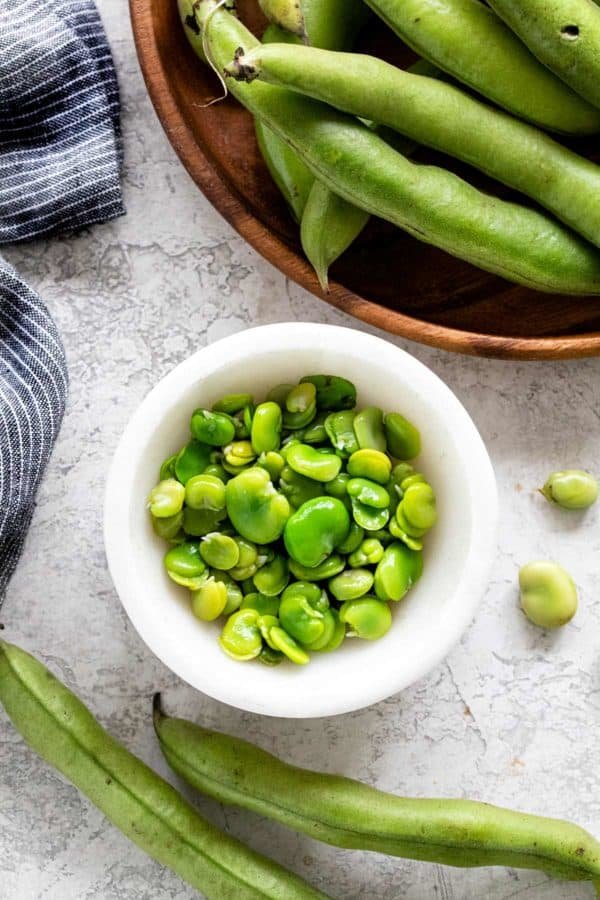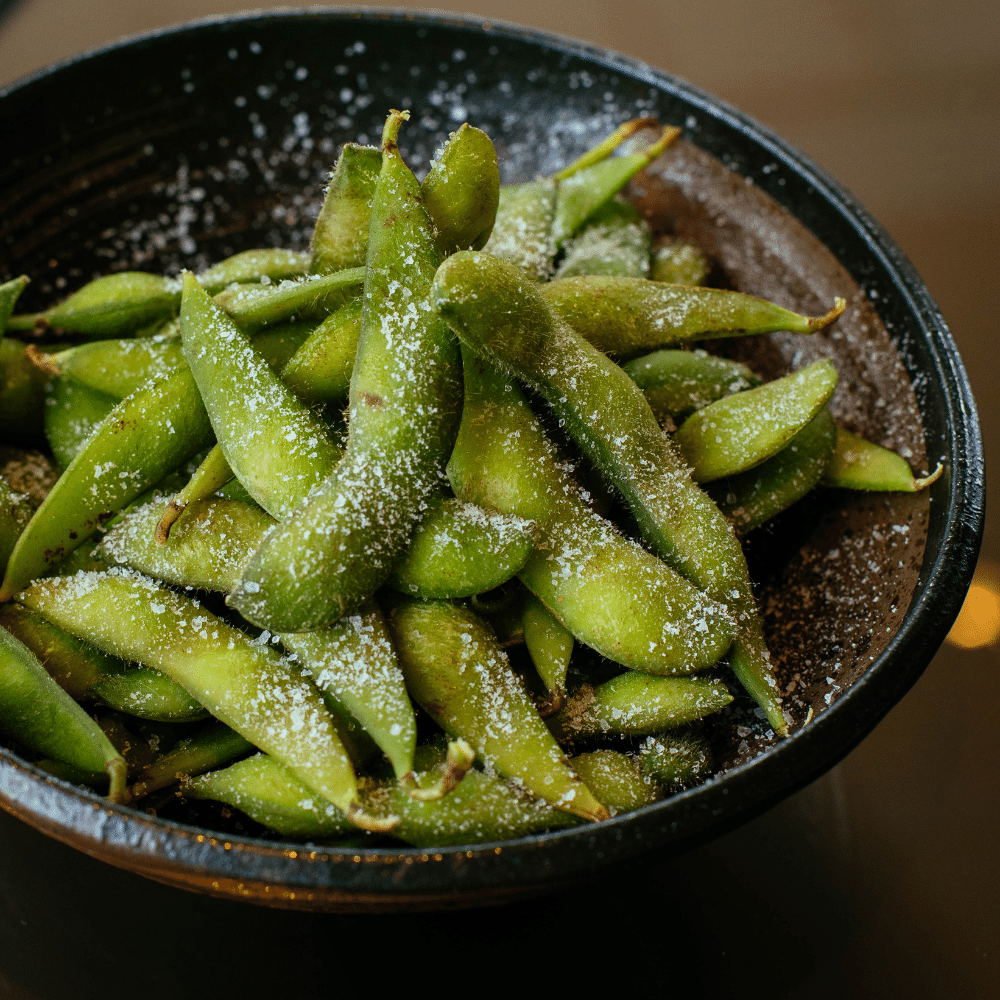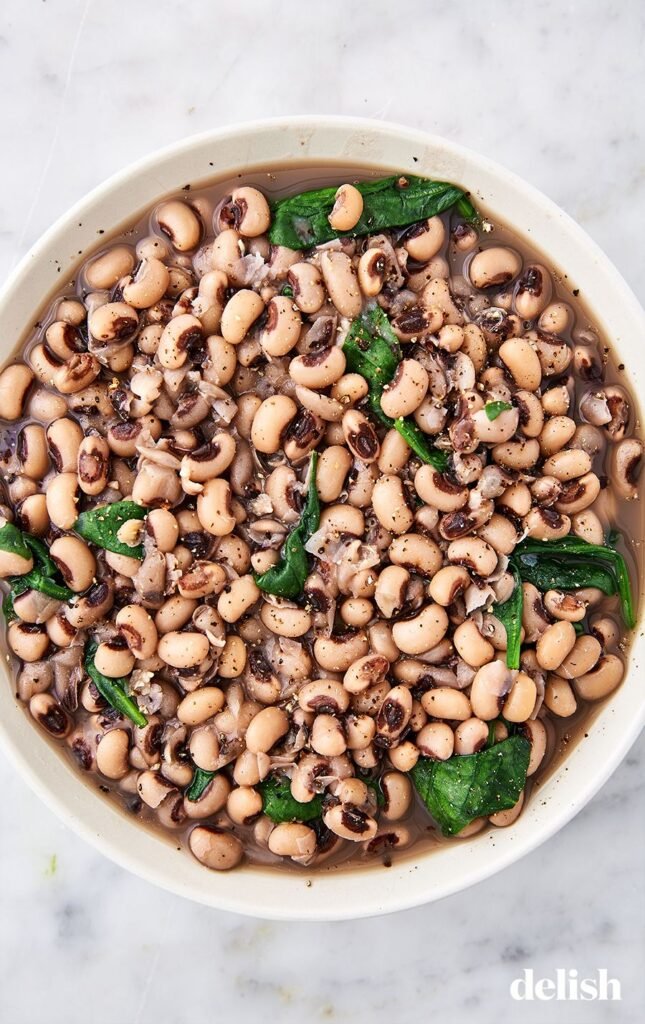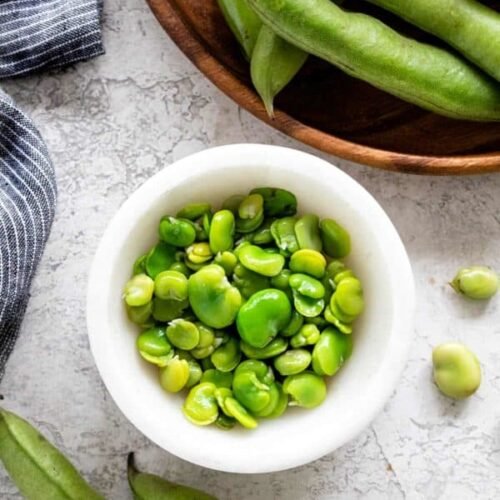Fava beans are a popular ingredient in many dishes, from soups and salads to stews and sides.
They’re also known as broad beans or fava beans, and they have a unique flavor that adds depth to any dish.
But what happens when you don’t have access to fresh fava beans?
Or maybe you just want something different?
Fortunately, there are several substitutes for fava beans that can be used in place of the real thing.
From edamame to chickpeas, here are 7 of the best substitutes for fava beans.
What Are Fava Beans?

Fava beans are a type of legume that is popular in Middle Eastern and Mediterranean cuisine.
They have a mild, nutty flavor and can be eaten raw, cooked, or dried.
Fava beans are also known as broad beans or fava beans and they come in many varieties.
The most common variety is the Vicia faba, which has a large seed inside an edible pod.
The pods can be eaten raw or cooked, while the seeds need to be shelled before eating them.
Fava beans can be boiled, steamed, sautéed, roasted, mashed into dips like hummus or falafel, or added to soups and stews for extra protein and fiber content.
The 7 Best Substitutes for Fava Beans
Fava beans are a great addition to any dish, but they can be hard to find.
Fortunately, there are plenty of substitutes that can be used in their place.
Here are seven alternatives that will give your dishes the same flavor and texture:
1 – Lima Beans

Lima beans, also known as butter beans, are a type of legume native to Central and South America.
They are large and flat, with a creamy texture when cooked.
Lima beans have a mild flavor that pairs well with other ingredients like garlic, onion, tomatoes, and herbs.
They can be eaten fresh or dried and are often used in soups and stews.
The main difference between Lima beans and fava beans is their size; lima beans are larger than fava beans.
Additionally, Lima beans tend to hold their shape better during cooking than fava beans do.
This makes them ideal for dishes where you want the bean to retain its shape after cooking such as salads or side dishes.
Overall, Lima Beans may be preferred over Fava Beans due to their larger size which allows them to retain their shape during cooking as well as their milder flavor which pairs well with many different ingredients making them more versatile in recipes than Fava Beans.
2 – Cannellini Beans

Cannellini beans are a type of white bean that is popular in Italian cuisine.
They are large, oval-shaped beans with a creamy texture and mild flavor.
They are often used instead of fava beans because they have a similar texture and flavor, but they don’t require as much preparation to use.
Cannellini beans can be cooked quickly without having to soak them first like you would with fava beans.
In addition, cannellini beans contain more fiber than fava beans, making them a healthier option for those looking for an alternative to the traditional legume.
Cannellini beans can be used in soups, salads, stews, or simply eaten on their own as a side dish.
They also pair well with other vegetables such as tomatoes and spinach.
3 – Kidney Beans

Kidney beans are a variety of legumes, most commonly found in red and white varieties.
They are named for their shape, which resembles the human kidney.
Kidney beans are often used as an alternative to fava beans because they have a similar texture and flavor profile.
They also cook much faster than fava beans, making them more convenient for busy cooks.
In addition to being a great substitute for fava beans in recipes, kidney beans have nutritional benefits as well.
They are high in fiber and protein, low in fat, and cholesterol-free.
Overall, kidney beans make a great substitution for fava beans because of their convenience factor but also due to their health benefits.
4 – Chickpeas

Chickpeas, also known as garbanzo beans, are a type of legume that is widely used in Mediterranean and Middle Eastern cuisines.
They have a nutty flavor and creamy texture when cooked, making them popular for salads, soups, stews, curries, hummus, and falafel.
Chickpeas come in two varieties: desi (smaller with a rough surface) and kabuli (larger with a smooth surface).
The most common way to prepare chickpeas is by soaking them overnight and then boiling them until they are tender.
They can also be bought canned or dried for convenience.
5 – Edamame

Edamame are immature soybeans that are harvested before they have had a chance to harden.
They can be eaten fresh, frozen, or dried and salted.
Edamame is popular in Asian cuisine, especially in Japanese dishes like sushi and soba noodles.
The beans can be boiled or steamed, then served with a sprinkle of salt as an appetizer or side dish.
Edamame makes for a great substitute for fava beans because it has a similar flavor profile and texture.
It also contains more protein than fava beans, making it a healthier alternative as well.
Additionally, edamame is much easier to find in stores than fava beans, which may not always be available depending on the season.
6 – Green Peas

Green peas are a type of legume that is widely used in many cuisines around the world.
The green pea is a small, round, and sweet-tasting vegetable that can be eaten raw or cooked.
They have a mild flavor and soft texture when cooked, making them popular for use in salads, soups, stews, and side dishes.
When it comes to using green peas instead of fava beans in recipes calling for them – green peas make an excellent substitute because they have similar flavors and textures.
Green peas can easily be substituted for fava beans without changing the overall flavor profile of the dish too much; however, they may not provide quite the same creaminess or nutty flavor that fava beans do.
7 – Black-Eyed Peas

Black-eyed peas, also known as cowpeas, are a legume that is popular in many parts of the world.
They have a mild flavor and creamy texture when cooked.
Black-eyed peas can be purchased either fresh or dried and are available year-round.
Fresh black-eyed peas should be stored in the refrigerator for no more than three days before cooking.
Dried black-eyed peas need to be soaked overnight before cooking, and they can last up to one year if stored in an airtight container in a cool, dry place.
When cooked, black-eyed peas become tender yet remain slightly firm with a nutty taste similar to other beans such as kidney beans or pinto beans.
They are often used in soups and stews but can also be enjoyed on their own as a side dish or added to salads and casseroles.
Conclusion
Fava beans can be hard to come by, but you don’t have to miss out on the flavor and texture.
Fortunately, there are several substitutes for fava beans that can be used in place of the real thing.
From edamame to chickpeas, lima beans, cannellini beans, kidney beans, green peas, and black-eyed peas—there are plenty of alternatives available that will give your dishes the same delicious taste.

The 7 Best Substitutes for Fava Beans
Ingredients
- Lima Beans
- Cannellini Beans
- Kidney Beans
- Chickpeas
- Edamame
- Green Peas
- Black-Eyed Peas
Instructions
- Pick your favorite substitute from the list above.
- Follow cooking directions for your selected substitute with the proper ratio of ingredients.
Hi, I'm Benjamin. I love cooking, long walks, and my girlfriend! Here you’ll find simple and delicious recipes that you can make in 30 minutes or less.

